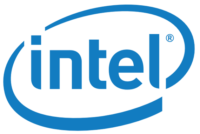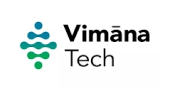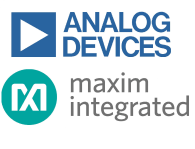Edge computing offers numerous benefits for businesses
The world is rapidly becoming more connected, with devices and information systems constantly sharing data over the internet and between applications.
This hyperconnectivity has led to an explosion of data. For example, the IDC’s Global DataSphere Forecast predicts global data creation will more than double from 2022 to 2026.
To handle this massive influx of data, businesses are turning to Edge computing to process and analyze data closer to its source.
Edge computing offers numerous benefits for businesses, including improved performance, reduced latency, increased scalability, and cost savings.
By processing data at the network’s edge instead of sending it back to a centralized cloud or server, businesses can improve response times for applications that require real-time analysis.
Additionally, Edge computing can help businesses save on costs associated with cloud storage and bandwidth usage by keeping data processing local.
These benefits will be explored in greater detail throughout this article.
What is Edge computing?
Edge computing is a distributed computing method that allows data analysis and processing to occur at the ‘edges’ of connected ecosystems.
Being at the ‘edge’ means that compute and processing power is located close to (or on) devices such as sensors and mobile phones where vital information is initially generated.
This localized aspect of Edge computing results in improved response times and utilizes resources more effectively.
With Edge computing, machines can operate as intended with minimal disruption or delay since data doesn’t need to be sent off to remote servers or the cloud for processing.
Edge computing leverages nearby endpoint devices to gather data, which is then analyzed and responded to using machine learning algorithms.
This can occur in dedicated devices such as IoT gateways or within the endpoints (devices) themselves, offering flexibility that makes it easier for organizations to deploy their applications and services while enabling them to achieve real-time analytics capabilities.
The 5 key benefits of Edge computing
By adopting Edge computing, organizations can optimize their data processing workflows, improve response times, and achieve better business outcomes, all while keeping costs under control.
Let’s explore the benefits of Edge computing further:
1. Edge computing reduces latency
Edge computing significantly reduces latency by eliminating the need to move data from endpoints to the cloud and back again. This can be measured in seconds or even milliseconds, making a massive difference in real-time decision-making capabilities.
Edge computing offers a reliable solution to latency issues in various applications such as autonomous vehicles, manufacturing, and medical use cases. By performing data analysis on the device instead of relying solely on cloud servers, Edge computing ensures that these machines can make calculations quickly and accurately, enabling safe and efficient operations.
With faster processing capabilities, Edge-enabled devices and applications can operate smoothly without lag, offering enhanced performance.
2. Edge computing increases scalability
Scalability is crucial for organizations to consider when evaluating their computing needs.
While cloud computing has enabled organizations to scale up their computing resources as needed, Edge computing provides a cost-effective and efficient alternative.
For instance, Edge computing systems enable organizations to add new hardware as they expand their use cases, making it easier for companies to scale at the Edge without investing additional resources in centralized data centers.
This can be especially beneficial for organizations with distributed operations and remote locations that require computing resources closer to their devices.
With the flexibility provided by Edge computing, organizations can adapt to evolving business needs and remain agile in their operations, which is essential to stay ahead of the competition and maintain a strong market position.
3. Edge computing improves security and privacy
Edge computing offers increased security and privacy benefits by keeping the data at the Edge rather than in centralized servers.
This is advantageous because Edge devices generally store minimal data, thus making them less attractive targets for malicious actors.
The decentralized nature of Edge computing also makes it harder for hackers to access an entire set of records. With data spread across numerous devices and locations, attackers must target multiple points of entry, increasing the complexity and difficulty of a successful attack.
To illustrate, consider a healthcare provider that collects patient vital signs using sensors.
With an Edge computing system, this data can be analyzed locally on Edge devices, reducing the need to send it to centralized servers. Keeping the information close to the Edge makes it more secure, minimizing the risk of unauthorized access.
Additionally, since the data is not stored together with other sources, any potential breach would be limited to only the specific device storing the data, reducing the likelihood of a widespread attack.
As can be seen, Edge computing provides a more secure way to process and store sensitive data, making it an attractive option for healthcare organizations (and other organizations) seeking to protect user privacy.
4. Edge computing reduces operational costs
The cost of transferring data has increased over time due to growing volumes of data. This often increases costs, even though data storage prices have decreased significantly in the last decade.
Edge computing can help minimize these costs by reducing the data transmitted to and from the cloud.
By processing data closer to its source, Edge computing improves efficiency and reduces latency and operational costs associated with bandwidth usage.
By offloading specific tasks from the cloud, Edge computing reduces the strain on cloud resources and allows for more efficient use of existing infrastructure.
Edge computing can also help reduce energy consumption as it requires less power than traditional cloud-based solutions.
These benefits can contribute to reduced operational costs and improved savings for businesses that adopt Edge computing solutions.
5. Edge computing increases reliability and resiliency
Edge computing has gained popularity due to its ability to provide reliable and resilient operations, even in areas where communication channels are slow or unavailable.
This is particularly beneficial for companies that operate in remote areas, such as energy companies with Edge computing deployments on oil rigs.
Instead of relying on an internet connection to continuously relay data back to a central data center for processing, Edge computing allows for the necessary data to be processed on-site at the Edge and then moved back to the data center when a connection becomes available.
In addition to improving reliability, Edge computing enhances resiliency by reducing the risk of a central point of failure.
Since each Edge device operates independently, a failure in one device will not affect the performance of other devices in the ecosystem. This improves the reliability of the entire connected environment and ensures that operations can continue uninterrupted, even if there are issues with one or more devices.
Overall, Edge computing provides a more resilient and reliable computing infrastructure for companies, which can benefit those operating in remote locations.
Edge computing boosts business outcomes
In conclusion, Edge computing offers numerous benefits for businesses, such as reduced latency, increased scalability, improved security and privacy, cost savings, and enhanced reliability and resiliency.
By processing and analyzing data closer to its source, businesses can optimize their data processing workflows and achieve better business outcomes, all while keeping costs low.












